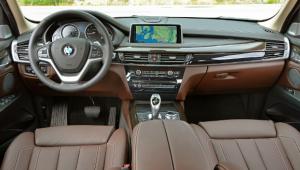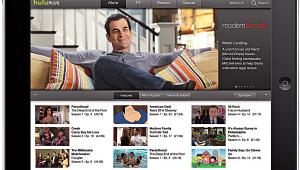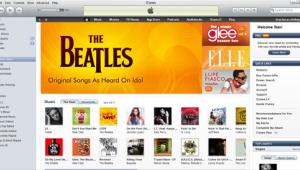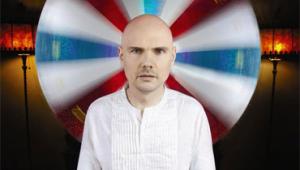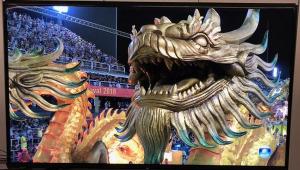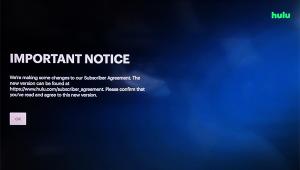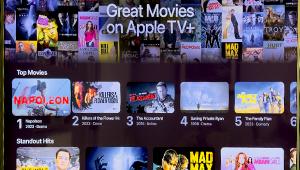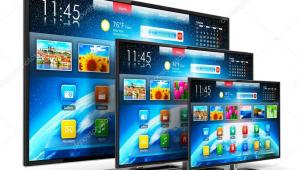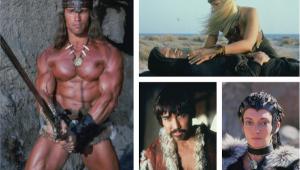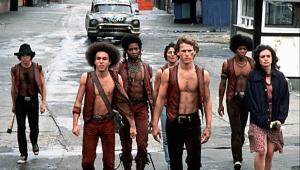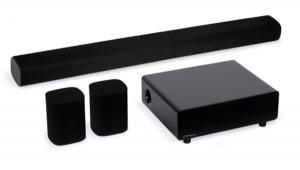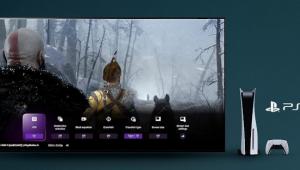S&V Guide to HDTV (Spring 2004) Page 2
HDTV Basics High-definition TVs aren't as "plug and play" as traditional analog TVs, but that doesn't mean you need a degree in electronics to figure out which model is the best for you, or how to receive high-def programming. Here are the four main things you need to know: • HDTV uses a digital signal free of the ghosting and signal-fade problems of traditional analog TV.• It has a higher-resolution image than DVDs and traditional TV, giving you a much more detailed picture.• Programs can be broadcast in a widescreen (16:9) aspect ratio, as opposed to the squarish 4:3 aspect ratio of traditional TV, so you can see more of the action in a sporting event or the entire frame of a widescreen movie.• Soundtracks can be broadcast in 5.1-channel Dolby Digital, giving you the same surround sound experience you get with DVDs.
High-def FormatsMost digital TV programs are broadcast using either the 1080i (interlaced) or 720p (progressive-scan) high-definition format. You don't need to know all the details about these since any HDTV that doesn't support both directly will automatically convert the unsupported format to its "native" screen format, but it's useful to have a general idea of what distinguishes them.
A digital image displayed on a TV is made up of horizontal scan lines, or pixel rows, and the format number indicates how many lines or rows (counting top to bottom) are in the complete video image, or frame. The frames of the 1080i format - which is used by NBC, CBS, PBS, UPN, and WB - are interlaced, which means that the even and odd lines of a frame are assigned to separate, interlocking fields displayed one after the other. The 720p format - used by ABC - is progressive-scan, with each line of a frame transmitted in sequence so the entire frame is shown at once. In general, 1080i excels with more static images, while 720p is best with fast motion.
Standard analog TV uses a 480i image. Any 480i programming is "upconverted" for high-definition broadcast, resulting in images that aren't true HDTV but might look better than their analog counterparts.
The digital TV standard also allows for 480p "enhanced definition" transmission - although Fox is the only network currently using this format, and it plans to switch to high-def 720p this fall. You'll find that some digital sets are enhanced-definition TVs, or EDTVs. While these sets aren't capable of the full resolution of high-def models, their pictures can be noticeably better than those of traditional TVs.
Aspect RatiosA few HDTVs have 4:3 aspect-ratio screens, but most have 16:9 screens, which means you won't see large black bars above and below the picture when watching most widescreen movies - which would include almost every movie from the past 30 years. The disadvantage of a 16:9 screen is that you'll have black or gray bars on either side of the image when watching anything broadcast in 4:3 - which is most older movies and most TV shows.
Types of HDTVsThere are two kinds of high-definition sets. HDTVs have a built-in digital tuner. HDTV monitors usually have an analog tuner for regular TV but need an outboard digital tuner to receive digital broadcasts.
ConnectionsYou can hook up a digital tuner to an HDTV monitor using the analog component-video inputs, but newer sets give you the option of a DVI (Digital Visual Interface) or HDMI (High Definition Multimedia Interface) digital connection. As its name implies, DVI is a video-only connection, while HDMI carries both audio and video. All HDMI and most DVI connections are compatible with HDCP (High-bandwidth Digital Content Protection), a copy-protection technology that's being built into new HDTV tuners and some DVD players with digital video connections. Some HDTVs also feature FireWire (a.k.a. i.Link) jacks for routing programs from the set's built-in tuner to a digital VCR for recording.
High-def Cable & Satellite If you plan to get high-def programming through your cable company, consider a "cable ready" set with a CableCARD slot. While there are currently only a few models available from Panasonic, this should become a much more common feature over the next few years. The cable runs directly to the set, instead of through a set-top box, and a card containing information on what programming you subscribe to goes into a slot on the TV.
The card also reads instructions from program providers that wish to control any recordings you make. For instance, under the cable industry agreement that allowed for the creation of the CableCARD sets, you would be permitted to make at least one copy of a show on basic or premium cable, but you could be prevented from making any copies of pay-per-view programming.
If you want to get your high-def programming through a satellite service, you'll need an outboard receiver. Most of the current models include both a digital tuner and an analog tuner so you can pick up local stations over the air.
And that's about it. Unlike when you went to buy your last analog TV, when shopping for your first HDTV you'll need to be more aware of the options. But knowing these few basics can make selecting it a lot easier.
-Michael Gaughn
- Log in or register to post comments



